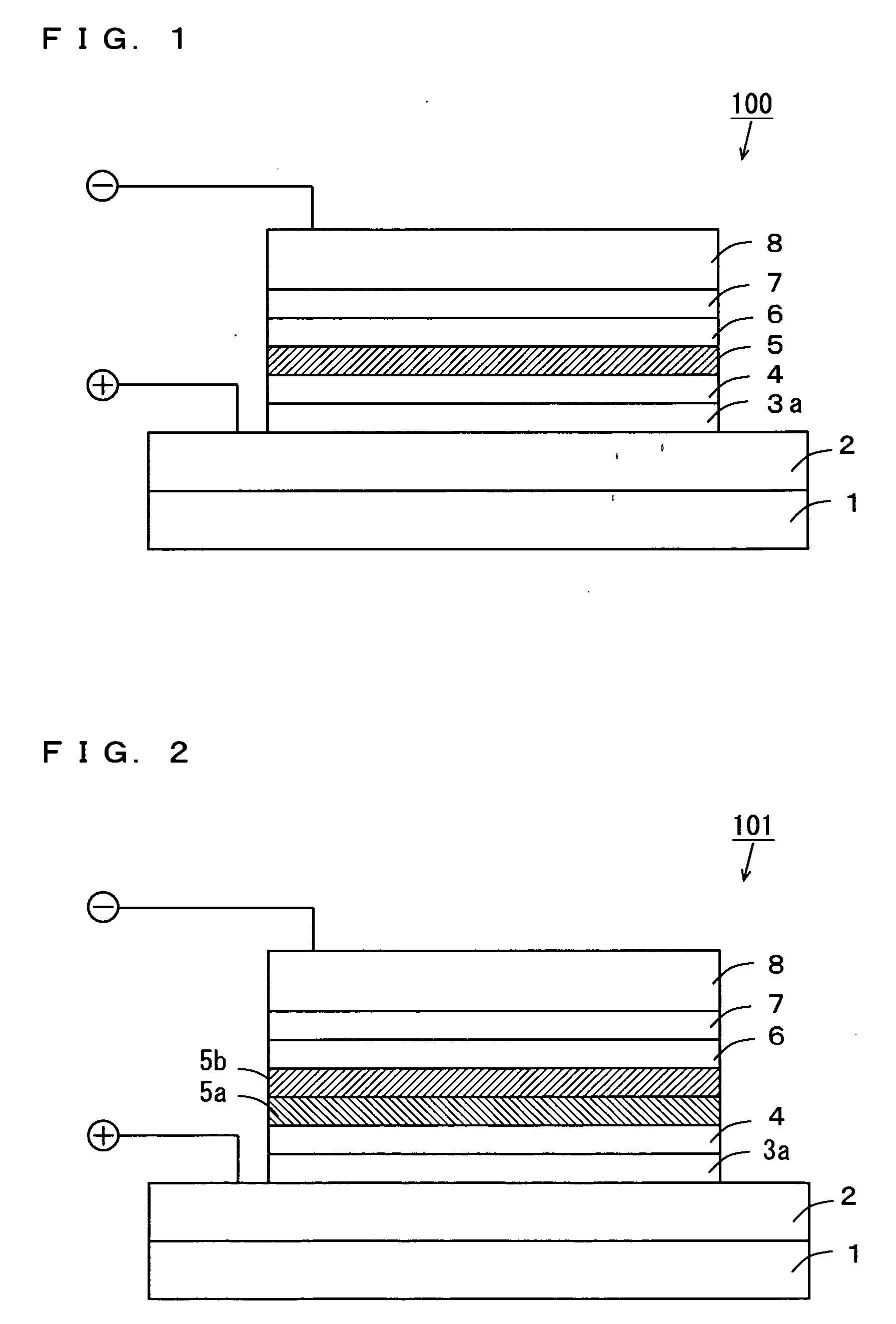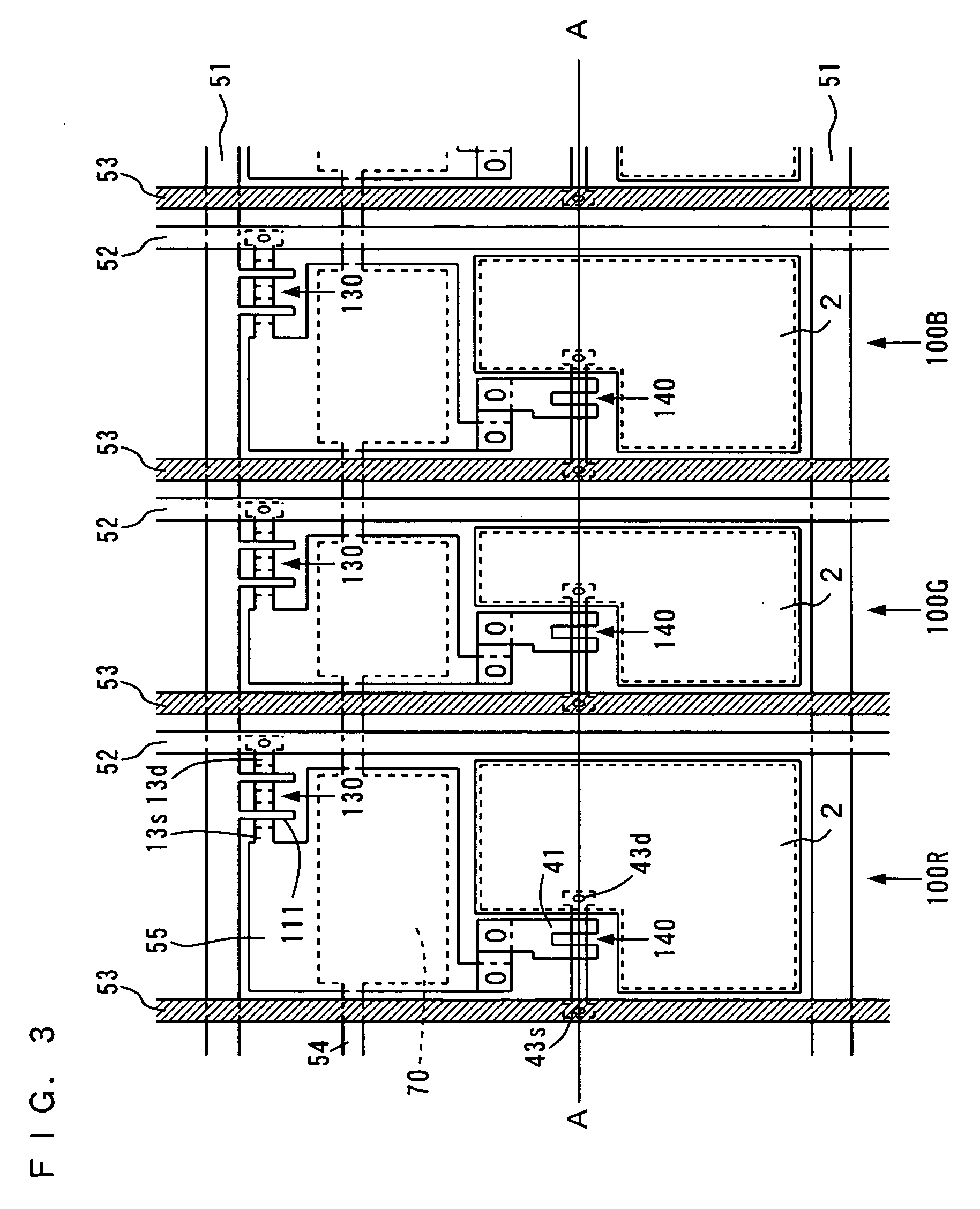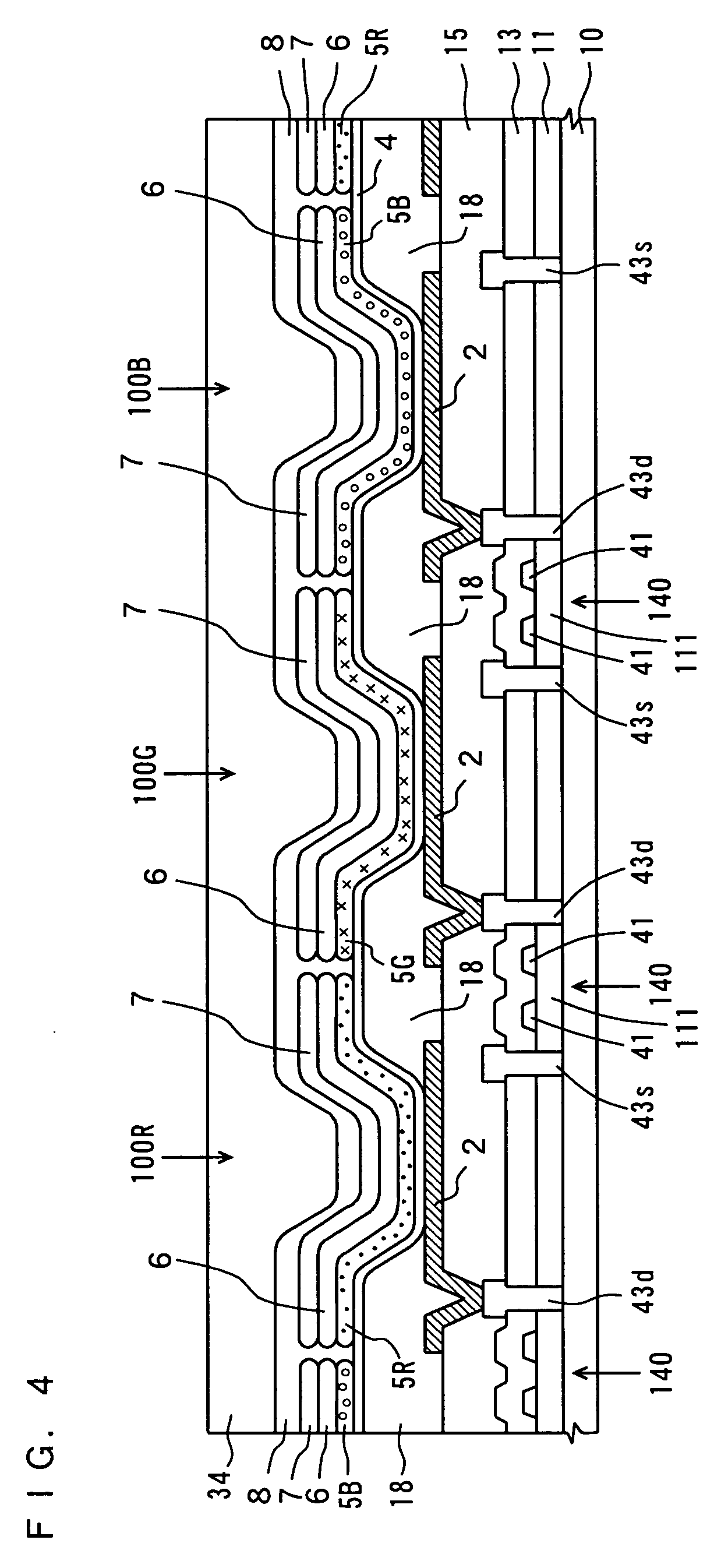Organic electroluminescent device
a technology of electroluminescent devices and organic materials, which is applied in the direction of luminescnet screens, discharge tubes, natural mineral layered products, etc., can solve the problems of increasing drive voltage and power consumption, triphenylamine derivatives, and becoming very unstable upon accepting electrons, etc., to achieve low drive voltage and long life
- Summary
- Abstract
- Description
- Claims
- Application Information
AI Technical Summary
Benefits of technology
Problems solved by technology
Method used
Image
Examples
first embodiment
[0055]FIG. 1 is a schematic cross section showing an organic EL device according to a first embodiment of the present invention.
[0056] In fabricating the organic EL device 100 shown in FIG. 1, a hole injecting electrode 2 made of a transparent conductive film such as indium-tin oxide (ITO), for example, is formed first on a substrate 1. Then, on the hole injecting electrode 2, a hole injecting layer 3a, hole transporting layer 4, light emitting layer 5, electron restricting layer 6, and electron transporting layer 7 are formed in sequence. Further, on the electron transporting layer 7, an electron injecting electrode 8 made of aluminum or the like is formed.
[0057] The substrate 1 is a transparent substrate made of glass, plastic or the like.
[0058] The hole injecting layer 3a is made of CFx (carbon fluoride) produced by plasma CVD (plasma chemical vapor deposition) method, for example. The hole injecting layer 3a preferably has a thickness not less than 0.5 nm and not more than 5 ...
second embodiment
[0088]FIG. 2 is a schematic cross section showing an organic EL device according to a second embodiment of the present invention. The organic EL device 101 of the second embodiment has a structure similar to that of the organic EL device 100 of the first embodiment, except including an orange light emitting layer 5a capable of emitting orange light and a blue light emitting layer 5b capable of emitting blue light, instead of the light emitting layer 5 in the organic EL device 100 of FIG. 1.
[0089] The orange light emitting layer 5a includes, for example, NPB as a host material, tBuDPN as an auxiliary dopant, and DBzR as a luminescent dopant. In this case, the luminescent dopant emits light, and the auxiliary dopant plays the role of assisting in the emission of the luminescent dopant by encouraging transfer of energy from the host material to the luminescent dopant. This allows the orange light emitting layer 5a to produce an orange emission having a peak wavelength of greater than ...
third embodiment
[0105]FIG. 3 is a schematic plan view showing an example of an organic EL display apparatus using organic EL devices, and FIG. 4 is a cross section of the organic EL display apparatus of FIG. 3 along the line A-A.
[0106] In the organic EL display apparatus of FIG. 3 and FIG. 4, an organic EL device 100R that emits in red, an organic EL device 100G that emits in green, and an organic EL device 100B that emits in blue are arranged in the matrix form.
[0107] Each of the organic EL devices 100R, 100G, 100B has a similar structure to that of the organic EL device 100 in FIG. 1. Each of the organic EL devices 100R, 100G, 100B comprises a red light emitting layer 5R that emits in red, a green light emitting layer 5G that emits in green, and a blue light emitting layer 5B that emits in blue, respectively, as a light emitting layer 5. The materials described in the first embodiment may be used for the light emitting layers 5R, 5G, 5B, respectively.
[0108] The organic EL display apparatus acc...
PUM
| Property | Measurement | Unit |
|---|---|---|
| peak wavelengths | aaaaa | aaaaa |
| thickness | aaaaa | aaaaa |
| thickness | aaaaa | aaaaa |
Abstract
Description
Claims
Application Information
 Login to View More
Login to View More - R&D
- Intellectual Property
- Life Sciences
- Materials
- Tech Scout
- Unparalleled Data Quality
- Higher Quality Content
- 60% Fewer Hallucinations
Browse by: Latest US Patents, China's latest patents, Technical Efficacy Thesaurus, Application Domain, Technology Topic, Popular Technical Reports.
© 2025 PatSnap. All rights reserved.Legal|Privacy policy|Modern Slavery Act Transparency Statement|Sitemap|About US| Contact US: help@patsnap.com



